Brighton and Hove Albion confirmed the departure of manager Chris Hughton a day after the end of the 2018/19 season, replacing him with Graham Potter from Swansea City. The former Newcastle United manager had been at the Amex stadium since 2014, securing promotion to the Premier League in 2017 and coaching the Seagulls to safety in their first season in the top flight since 1983.
With reactions to Hughton’s departure mixed, this tactical and statistical analysis will delve deeper into possible reasons why the former Ireland international was relieved of his duties on the south coast.
An ambitious club
To gain an insight into what may have sealed Hughton’s fate, you can look at what Brighton are building as a club under the stewardship of Chairman Tony Bloom.
Bloom made his money as a professional gambler, betting on football markets, and it was clear during the 2018 summer transfer window that there was a large analytics influence over player recruitment.
In signing the likes of Yves Bissouma and Florin Andone, it was seen by some in the analytics community as a very smart transfer window that could potentially consolidate the Seagulls as a Premier League force.
Instead, Hughton largely remained faithful to those who had secured the top flight status the season before. Opting to remain with a cautious style of play, Brighton once again remained in the Premier League. This, however, was evidently not enough for the Brighton decision makers.
Brighton are an ambitious club, with a state of the art training ground and category one academy, they are clearly not content to simply exist in the Premier League.
Underlying numbers
In their two seasons back in the top flight, the Seagulls finished 15th in 2017/18 with 40 points, followed by 36 points in the 2018/19 season just finished, avoiding the drop in 17th by just two points.
In terms of goalscoring, they managed one goal more in 2018/19, with the defence leaking six extra goals with 60 conceded.
Looking at Albion’s expected numbers, Understat’s model suggests that largely the Seagull’s have gotten pretty much what they deserved in terms of points in their two Premier League seasons, as well as their xG for and against numbers. The actual and expected points both point towards a team that has regressed somewhat.
One thing that stands out in the data is that it is their attack where the issues lie. The only team to put up less xG than Brighton in 2018/19 were Huddersfield. Whilst in both seasons the Seagulls were expected to have scored around 37 goals, in 2018/19 the bottom half of the table is scoring more goals. In 2017/18 the bottom ten teams scored an average of 37.5 goals, whereas this increased to 41.6 in 2018/19. Basically, Brighton stood still, and they nearly paid the price with relegation.
For an ambitious club, there were admittedly little to no signs that the team was developing in their second season back in the Premier League.
The problem with Brighton’s attack can be boiled down to the fact that it is almost entirely dependent upon Glenn Murray. The English striker has hit 12 goals in 2017/18, followed up with 13 goals in 2018/19 at roughly his expected numbers. Beyond him, however, there is no one who has proved to be a huge threat to goal – with centre-back Shane Duffy the club’s second top goalscorer with five, all coming from set-pieces.
Beyond this Pascal Groß registered three goals at 0.20 xG per 90, and Florin Andone also three goals from an impressive enough 0.36 xG per 90. The latter example leads us nicely to the issue of Brighton’s summer recruitment, with the Romanian forward’s three Premier League goals coming in 861 minutes. Chris Hughton never seemed to fully trust the cohort of players who joined Albion last summer.
Summer recruitment
In the months leading up to the 2018/19 season, Brighton invested heavily, with the most notable captures being Alireza Jahanbakhsh, Yves Bissouma, Bernardo, Martin Montoya and Florin Andone.
This investment was interesting because it deviated from the accepted norm of buying tried and trusted Premier League experienced players. It suggested a creative approach to recruitment which was most likely driven by analytics focused scouting.
This approach will surely only be a success if the person in charge of picking the team is on board with this strategy.
The outlay for those five players was 52 million according to Transfermarkt, but only one of these players, Martin Montoya, playing more than 2000 Premier League minutes.
With Chris Hughton remaining faithful to the players who had kept them in the League the season previously, as well as playing largely similar tactics this once again points to a team that very much stood still in 2018/19.
Cautious tactics
As Brighton returned to the top flight in 2017, it is entirely understandable that Chris Hughton decided a caution-first approach to securing safety was the best option. This remained the same in 2018/19, as their main priority was to be hard to beat, and focus on counter-attacks and set pieces to score enough goals to secure safety once more.
This approach centred around a low block 4-5-1 shape out of possession. Averaging 44% of the ball, one of the lowest in the division, they would find themselves in this shape for long periods of time.
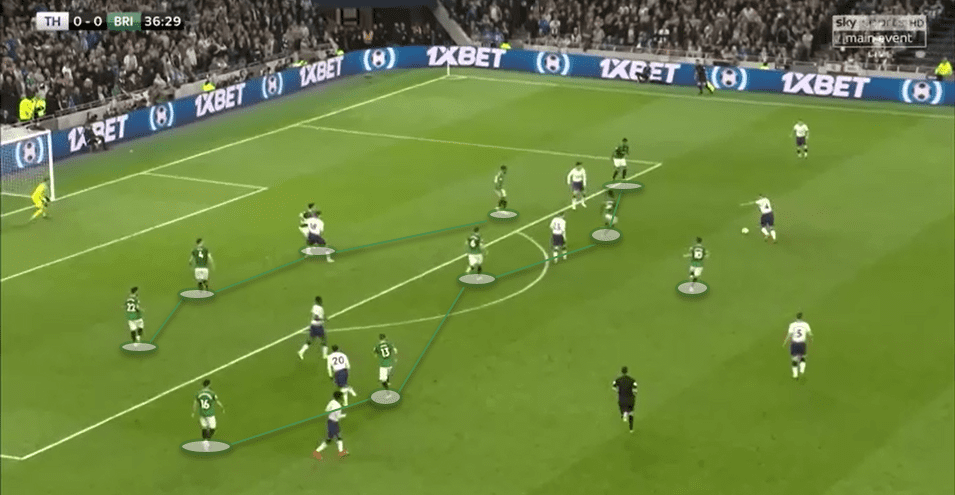
This shows the standard approach for the Seagulls, as they drop into the 4-5-1, with both wingers tracking back deep into their own half, the back four remaining narrow. This occupation of the pitch means by sheer numbers they are covering the area closest to their goal, minimising space in behind and in between the lines.
This, however, had a knock-on effect on their attack, where this shape and positioning does not allow them to transition to the counter-attack in numbers. As both wingers drop back to defend deep in their own half, they are pinned back into full-back positions.
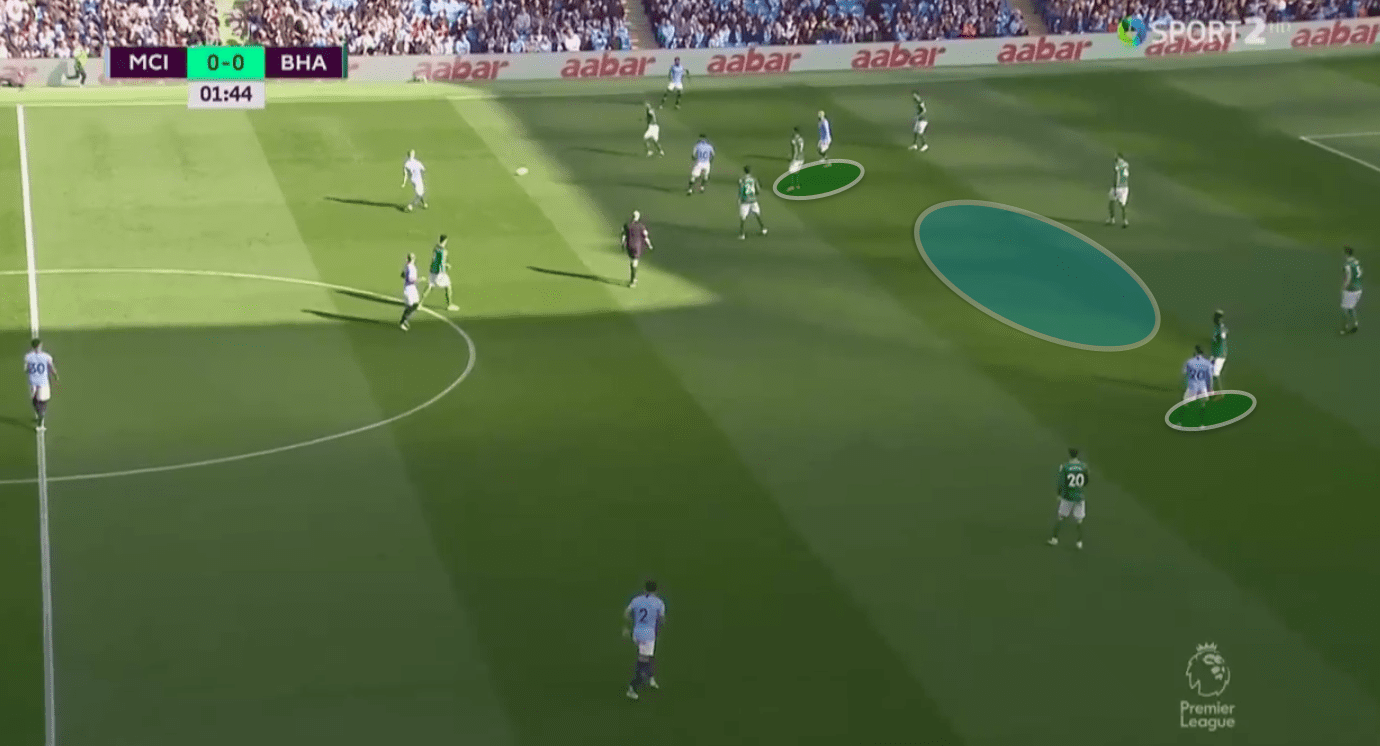
Their central midfielders are also in the habit of man-marking, which means the opponents are the ones dictating their positioning. In this example, Bissouma and Kayal have followed Manchester City’s number eights, where they are dragged deep and wide leaving space centrally. As well as being easy to manipulate and open up central spaces, this also means they are both often in positions where they are in a less than optimal position to join counter attacks.
Counter-attacking
With the primary strategy being to defend in a low block, concede possession and maintain their defensive position, this meant their main route to scoring open play goals lay in the counter-attack.
The problem, however, was that throughout the campaign Brighton struggled to really pose a big enough threat on the break to trouble their opponents, for several reasons.
Their defensive positioning meant their counter-attacks often lacked numbers, and in many cases unimaginative movement and execution.

In this example, the ball is recovered centrally, usually a good position to begin a counter-attack. Notice, however, how both Brighton players positioned in wide areas have not reacted to the turnover and are still facing towards their own goal, not the best posture to begin a counter-attack.
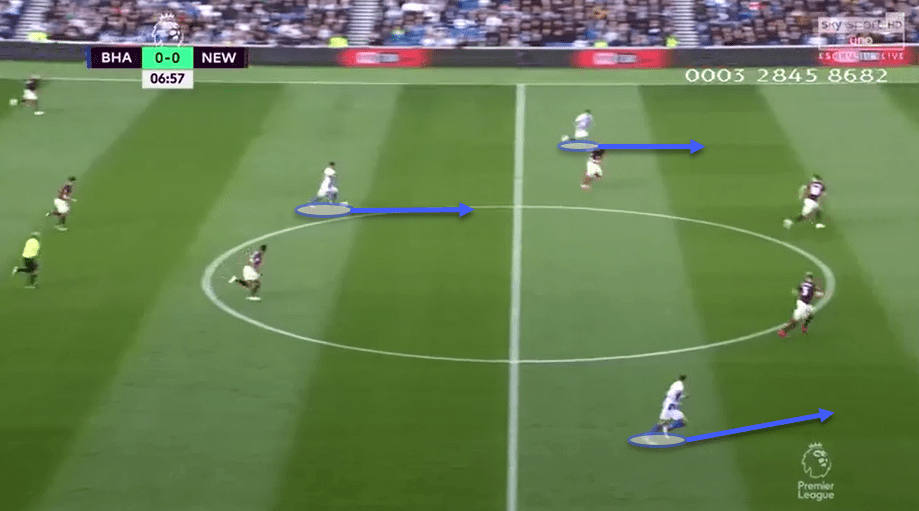
As Brighton move forward on the break, they are now in a position where Newcastle defenders are running back towards their own goal with a potential 3v3 to take advantage of. They, however, display a lack of effective movement to drag the Newcastle defence out of position. All three players simply run in straight lines, which allows the Newcastle defenders to keep their positioning.
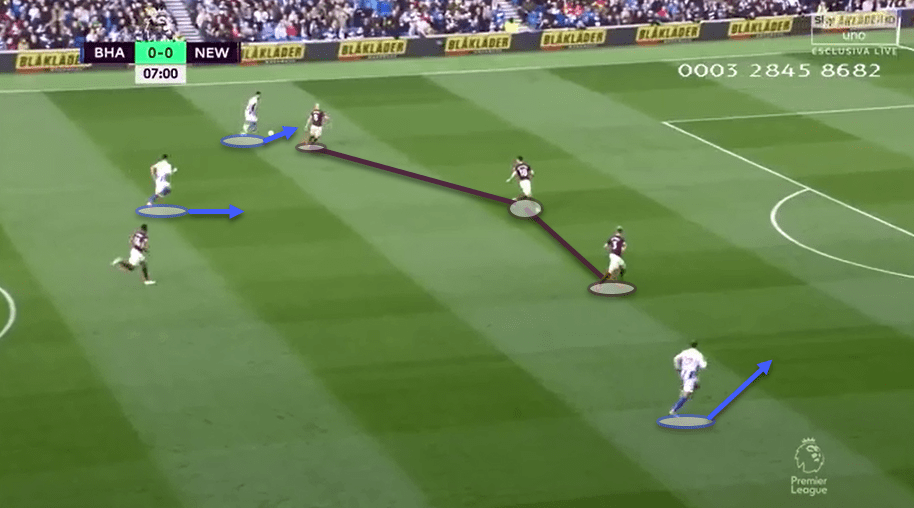
Because of a lack of crossover and decay runs, Newcastle defenders do not have to make any decisions to hand over marking and tracking duties. They find it easy to remain narrow and force Brighton wide where the attack fizzles out.
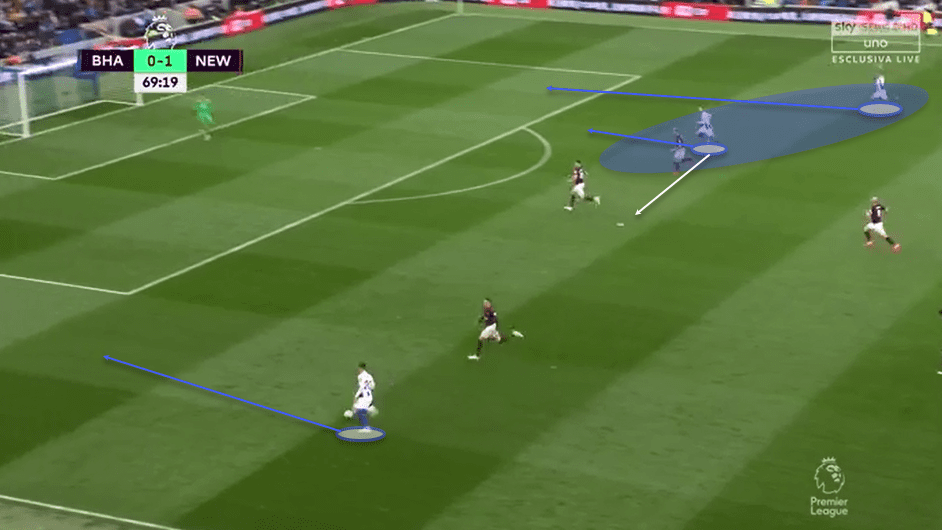
In the same game, Brighton once again counter-attack with three players breaking forward. As Solly March is left 1v1 he is once again let down by a lack of movement from his team-mates who again are caught running in straight lines. At the back post, Brighton have a 2v1 however Glenn Murray continues his run forward (blue arrow) which is easily tracked by his marker. Had he checked his run inside (white arrow) he could have dragged his marker away leaving his team-mate at the back post free to receive the cross.
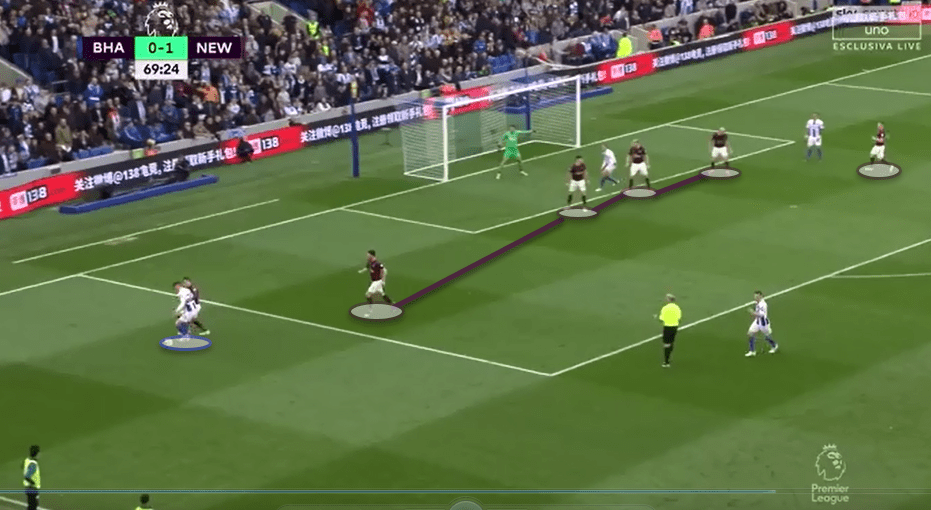
Once again the attack breaks down as Solly March did not have the quality to beat his opponent 1v1, nor have quality movement ahead of him to find a free player. He is then funnelled away from goal as Newcastle recover well and become organised, and the opportunity is gone.
This lack of imagination in their forward movement was a feature of Brighton’s attack all season and accounts for their struggle in scoring enough goals. By counter-attacking from the low block they often attack with few numbers, often just three players. Because they start from so deep, players are also asked to run 70-80 yards to join attacked meaning executing high-quality actions is difficult after sprinting such a long distance.
Individually they do not possess players who have qualitative superiority to consistently beat opponents 1v1, so the lack of quality and coordinated counter-attacking movement means they struggle to unbalance opponent defences often enough to provide a real threat.
The correct decision?
On the day the news of Chris Hughton’s departure broke, the general feeling was that this was a harsh decision from the Brighton board. Many warned that Brighton should be careful what they wish for, but it is unlikely that the smart way in which Brighton operate means this was a knee-jerk decision.
There is no question that Chris Hughton has done a very good job of taking Brighton to the Premier League and keeping them in it for two seasons, and he leaves with his reputation intact.
The decision to let him go is most likely motivated by the fact that there has been little evidence this season of progression, and another season of the same tactics that rely on an ageing striker to keep them in the Premier League could see them fall into another relegation scrap.
With the money spent last summer, and an ambitious club that has recently hired Dan Ashworth as it’s Technical Director, this very much felt like the end of the road for Hughton at Brighton.
If you love tactical analysis, then you’ll love the digital magazines from totalfootballanalysis.com – a guaranteed 100+ pages of pure tactical analysis covering topics from the Premier League, Serie A, La Liga, Bundesliga and many, many more. Buy your copy of the May issue for just ₤4.99 here, or even better sign up for a ₤50 annual membership (12 monthly issues plus the annual review) right here.

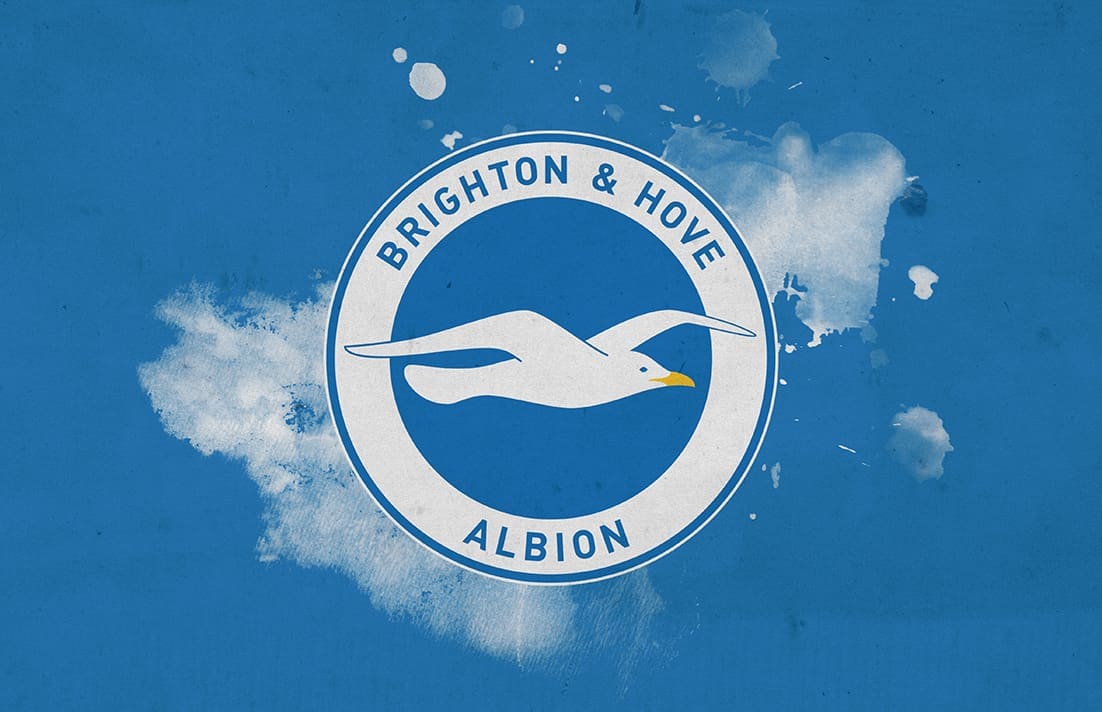



Comments